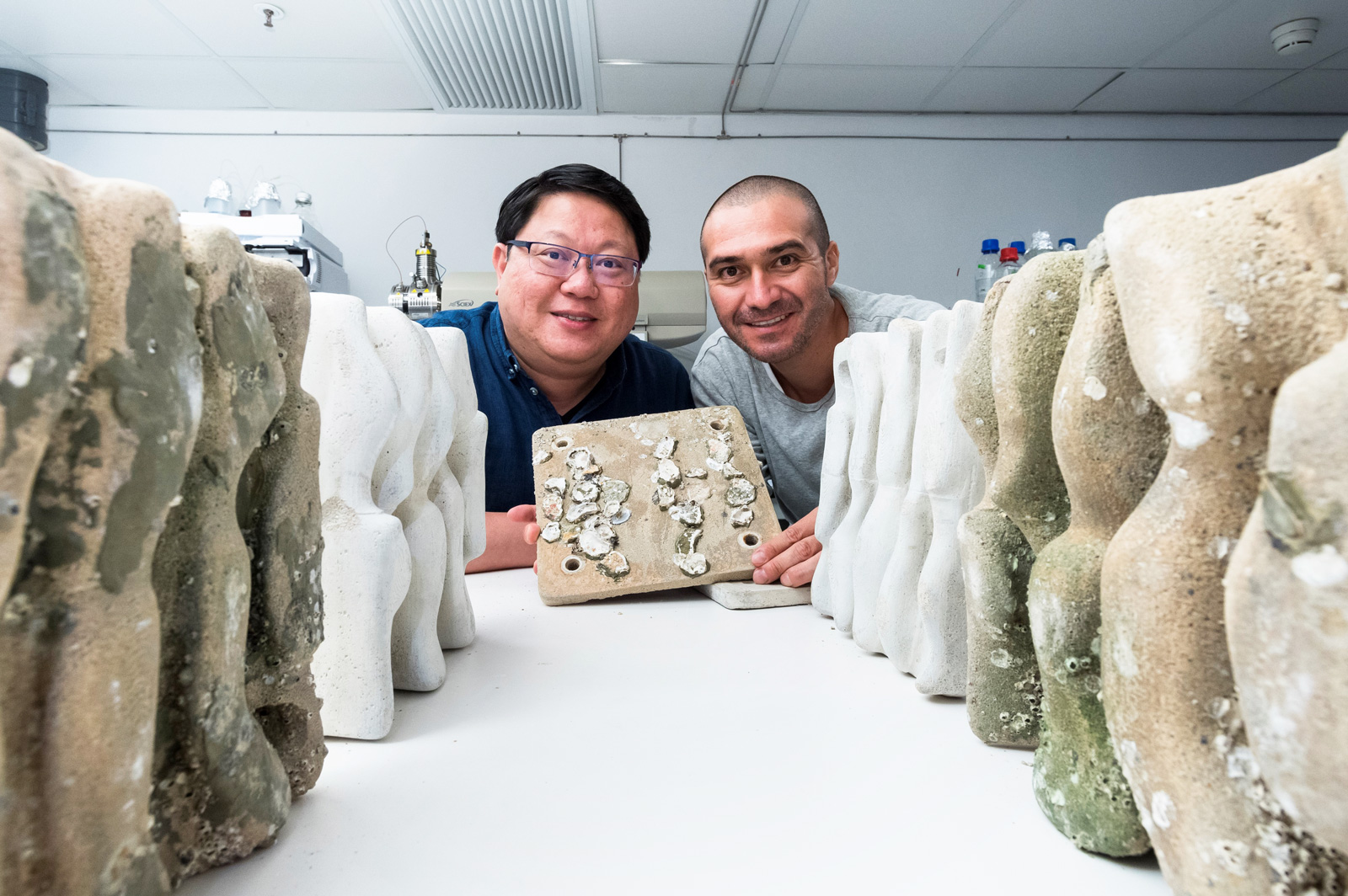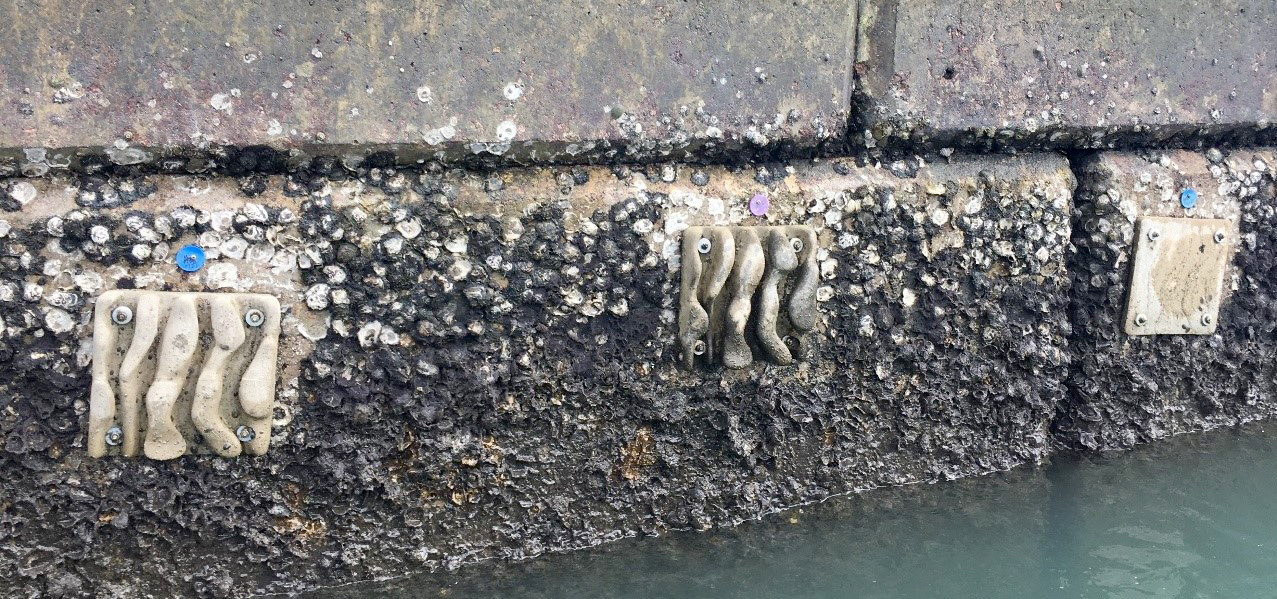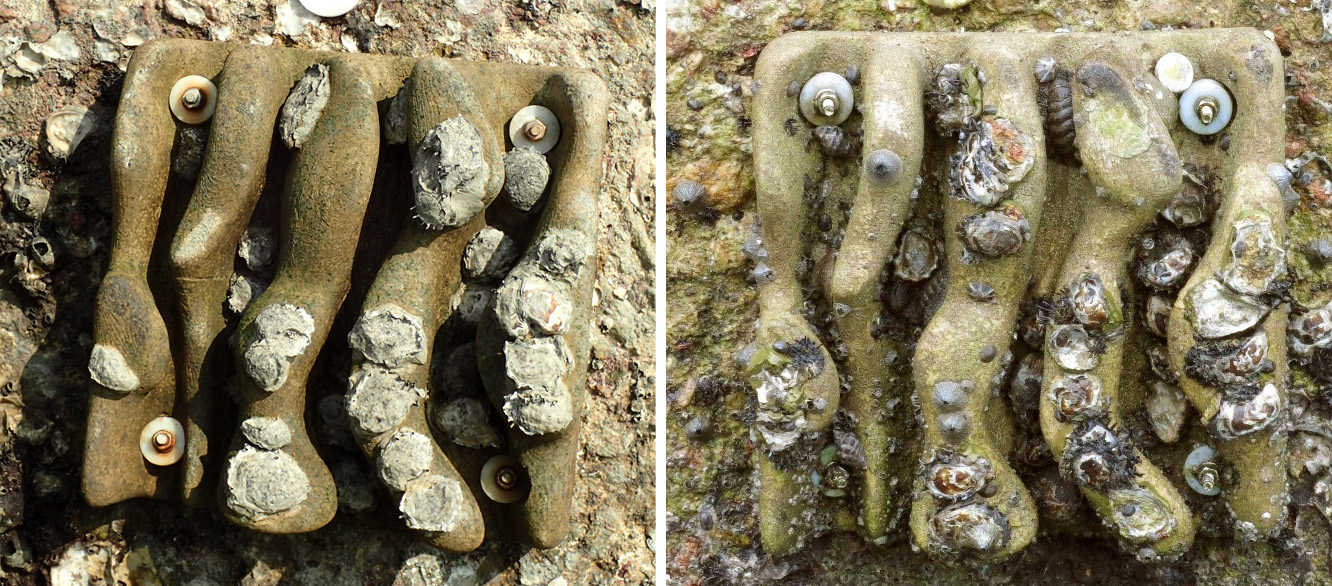Seawalls’ marine biodiversity enhanced by eco-engineered tiles: CityU study

A research team of marine ecologists led by Professor Kenneth Leung Mei-yee, Director of the State Key Laboratory of Marine Pollution at City University of Hong Kong (CityU) and Chair Professor of Environmental Toxicology and Chemistry in the Department of Chemistry, has generated promising results for enhancing marine biodiversity on seawalls in the western waters of Hong Kong via eco-engineered tiles.

The research team attached experimental tiles to vertical seawalls in Sham Shui Kok on Lantau Island and Lok On Pai in Tuen Mun. Applying the principles of eco-engineering, eco-friendly tiles were created with crevices and grooves that can serve as microhabitats for marine organisms while the shade can lower the surface temperature during low tides and in summer, thus overcoming thermal stresses caused by conventional seawalls.
Additionally, bivalve seeding was applied by affixing half of the tiles with the local rock oyster Saccostrea cuccullata as a more natural way to increase habitat complexity. The experiment produced positive results as the experimental tiles with crevices 2.5 cm or 5 cm deep had up to twice the number of species present in the shaded crevices than on the exposed ledges. When compared with flat tiles, the tiles with crevices could harbour more marine species (with an increase of 19 - 51%) and higher abundance of organisms (with an increase of 59 - 416%). These figures were also higher than those observed on the seawalls. The tiles with oysters attracted the growth of new oysters and provided food for predators, which promoted a healthy ecosystem.
By increasing surface complexity with crevices, the eco-engineered tiles provide shelter and reduce the surface temperature, which allows a greater variety of species such as gastropods and limpets to live and grow, according to Professor Leung. The research findings were published in the international journal Marine Pollution Bulletin under the title “Provision of refugia and seeding with native bivalves can enhance biodiversity on vertical seawalls”.
“The results from our study clearly show that we can effectively enhance marine biodiversity on seawalls by increasing habitat complexity through eco-engineering, and this technology can be applied to all existing seawalls in Hong Kong,” said Professor Leung.

Funded by the Civil Engineering and Development Department of the Hong Kong SAR Government, an on-going trial of various eco-engineered fixtures (i.e., tiles, panels, tidal pools, armouring units and oyster baskets) is underway in vertical and sloping seawalls in Ma Liu Shui, Sai Kung, and Tuen Mun. As land reclamation and development continue, eco-engineering can help mitigate the negative effects of artificial seawalls that lack habitat complexity and are prone to heat and desiccation stresses.
The research is part of the World Harbour Project that deployed the same experimental tiles in 14 coastal cities in the world including London, San Francisco and Sydney for 12 months. The results show that increased complexity consistently enhance the biodiversity of marine invertebrates on the experimental tiles across all locations, despite some variation.
The positive effects of complexity on total species richness and mobile mollusc abundance were the greatest at lower latitudes while the cover of sessile invertebrates responded more strongly to complexity at higher latitudes. The research findings were recently published in Global Ecology and Biogeography under the title “A global analysis of complexity–biodiversity relationships on marine artificial structures”.
The CityU research team’s contribution to World Harbour Project is a collaboration with the Swire Institute of Marine Science of the University of Hong Kong.